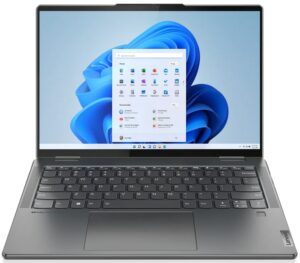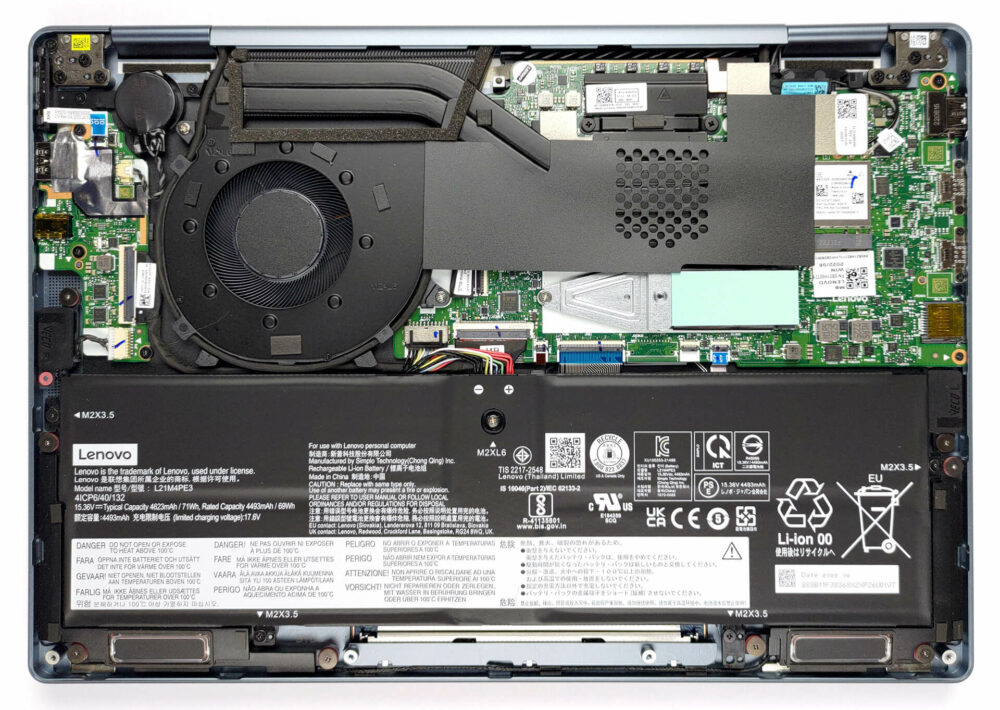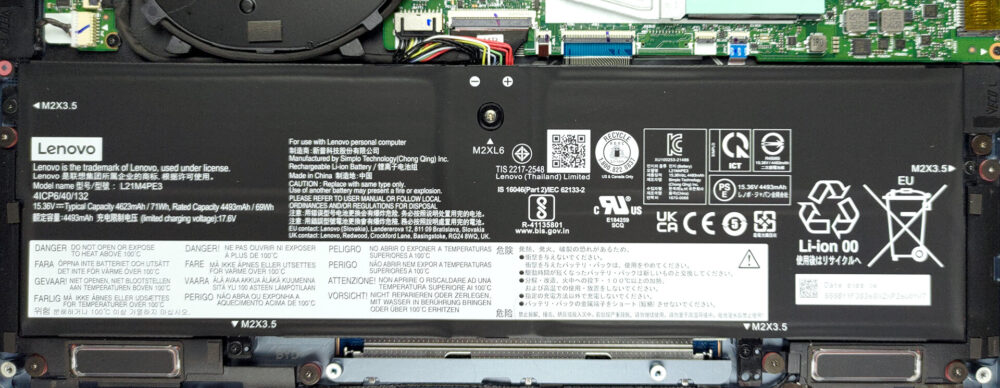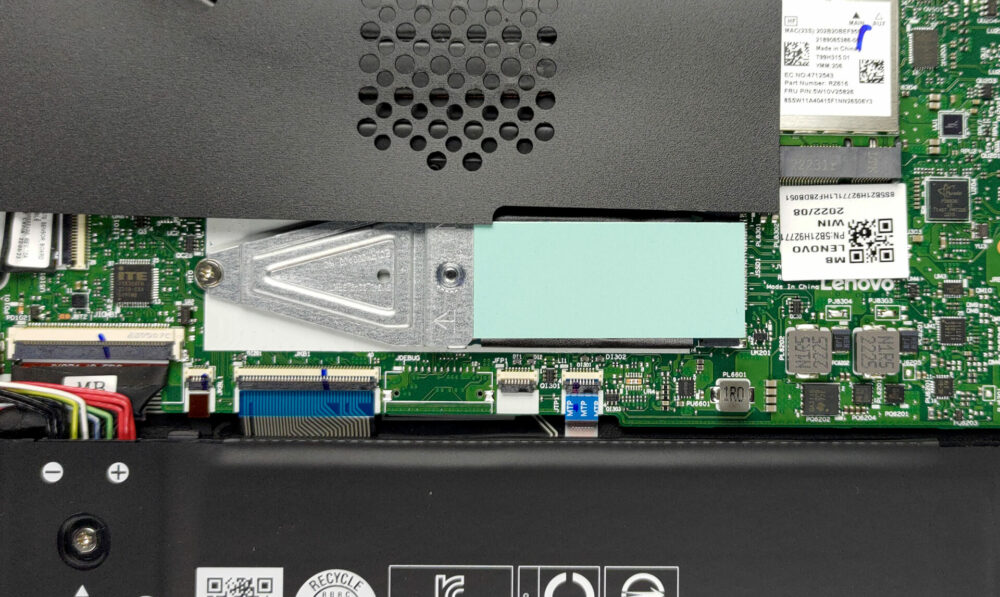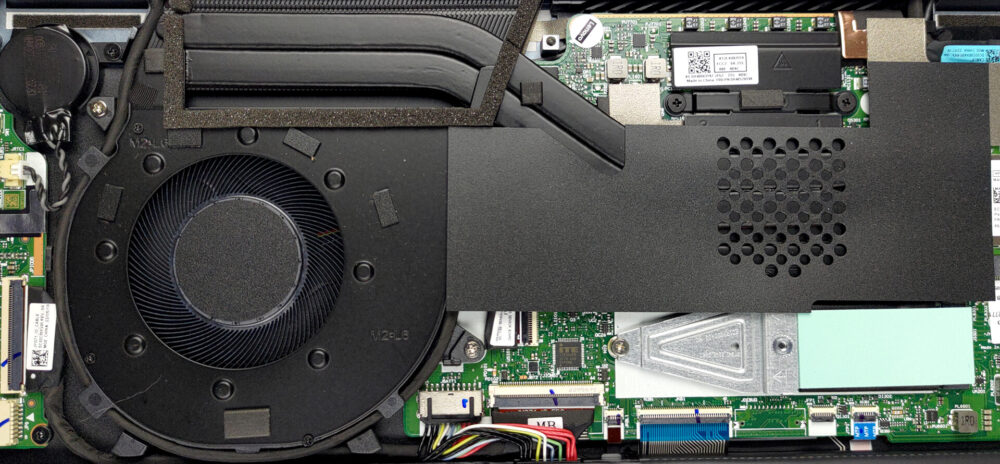How to open Lenovo Yoga 7 (14″, 2022) – disassembly and upgrade options
Upgradeability is not the biggest strength of this device. However, you can still do something on the inside. Take a look!
Check out all Lenovo Yoga 7 (14″, 2022) prices and configurations in our Specs System, or read more in our In-Depth review.
1. Remove the bottom plate
To take this laptop apart, you need to undo 7 Torx-head screws. Then, pry the bottom panel with a plastic tool, and lift it away from the chassis.
2. Remove the battery
Inside, we find a 71Wh battery pack. It lasts for 12 hours of Web browsing, or 12 hours and 30 minutes of video playback. To take it out, you need to unplug the battery connector and undo 5 Phillips-head screws.
3. Upgrade memory and storage
Expectedly, the memory here is soldered to the motherboard. You can find the notebook in configurations with up to 32GB of LPDDR5 RAM, working at 6400MHz. Storage-wise, there is one M.2 PCIe x4 slot, which supports Gen 4 drives and fits either 42 or 80-mm SSDs.
4. Cooling system
Here, the processor is cooled by two heat pipes, a heat sink, and a fan. In addition, there is a heat spreader meant for the VRMs.
Check out all Lenovo Yoga 7 (14″, 2022) prices and configurations in our Specs System, or read more in our In-Depth review.
Lenovo Yoga 7 (14", 2022) in-depth review
We have spent some time with the Yoga 7 (14", 2022) and we're really excited to share our review with you. This is the AMD version of the device, so if you're interested in the Intel model, check out the review we have of the Yoga 7i (14", 2022).Obviously, the main difference between the two will be the processor. Interestingly, AMD spent a suspiciously long time before shipping the Ryzen 6000U series to the public. Actually, this is our first proper taste of it, months after we checked the more powerful 45W version.We expect to see a good performance bump over last year, but mainly i[...]
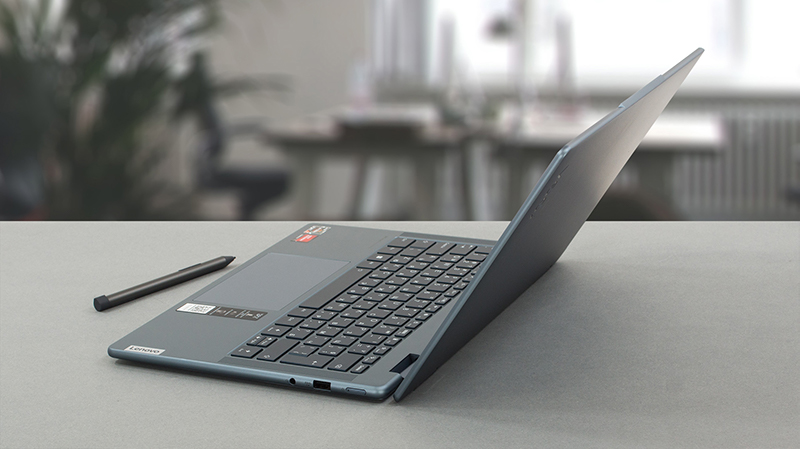
Pros
- Good battery life
- Strong aluminum chassis
- Decent cooling
- Full sRGB and DCI-P3 coverage
- 90Hz refresh rate with super-fast pixel response time
- Infinite contrast ratio
- High resolution and 16:10 aspect ratio
- No PWM
- IR face recognition + fingerprint reader
- USB4 + HDMI + MicroSD card
Cons
- Soldered memory
